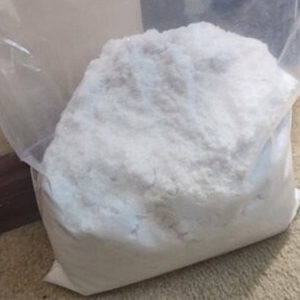The Dangers of Illicit Drug Use
Illicit drug use is a growing problem in the United States, with millions of people using drugs for non-medical purposes. According to the National Survey on Drug Use and Health, an estimated 24.6 million Americans aged 12 or older used an illicit drug in the past month. This is a concerning trend, as illicit drug use can have serious consequences on an individual’s health, relationships, and overall well-being.
In this article, we will explore the dangers of illicit drug use and why it is important to address this issue.
What Are Illicit Drugs?
Definition and Examples
Illicit drugs, also known as illegal drugs, are substances that are prohibited by law and are used for non-medical purposes. These drugs are often highly addictive and can have severe physical and psychological effects on the user.
Some examples of illicit drugs include:
- Cocaine
- Heroin
- Methamphetamine
- LSD
- Ecstasy
- Marijuana (in states where it is not legalized)
How Are They Obtained?
Illicit drugs are obtained through illegal means, such as drug trafficking, drug dealers, or by stealing prescription drugs from others. They are often sold on the street and can be laced with other dangerous substances, making them even more harmful.
The Dangers of Illicit Drug Use
Physical Health Risks
by Alessio Fiorentino (https://unsplash.com/@fioreale)
Illicit drugs can have serious physical health risks, including:
- Overdose: Illicit drugs are often unregulated and can be laced with other substances, making it difficult to know the exact dosage. This can lead to accidental overdose, which can be fatal.
- Heart problems: Stimulant drugs like cocaine and methamphetamine can cause heart problems, including heart attacks and irregular heartbeats.
- Respiratory issues: Drugs like heroin and prescription opioids can slow down breathing and lead to respiratory failure.
- Infectious diseases: Sharing needles while using drugs can increase the risk of contracting infectious diseases like HIV and hepatitis.
Mental Health Risks
Illicit drug use can also have severe mental health risks, including:
- Addiction: Many illicit drugs are highly addictive, making it difficult for users to stop using them even when they want to.
- Mood disorders: Drugs like cocaine and methamphetamine can cause changes in brain chemistry, leading to mood disorders like depression and anxiety.
- Psychosis: Some drugs, like LSD and PCP, can cause hallucinations and delusions, leading to psychosis.
- Cognitive impairment: Long-term drug use can lead to cognitive impairment, affecting memory, decision-making, and overall brain function.
Social and Relationship Risks
Illicit drug use can also have a significant impact on an individual’s social life and relationships. Some of the risks include:
- Isolation: Drug use can lead to isolation as individuals may prioritize drug use over social activities and relationships.
- Financial problems: Illicit drugs can be expensive, and individuals may resort to illegal activities to fund their drug use, leading to financial problems.
- Strained relationships: Drug use can cause strain on relationships with family, friends, and romantic partners, as individuals may prioritize drug use over their relationships.
The Most Abused Illicit Drug in the United States
According to the 2019 National Survey on Drug Use and Health, the most commonly used illicit drug in the United States is marijuana, with an estimated 43.5 million people aged 12 or older reporting past-month use. This is followed by prescription pain relievers, with an estimated 9.7 million people reporting past-month use.
Addressing the Issue of Illicit Drug Use
The Role of Education and Prevention
by Debby Hudson (https://unsplash.com/@hudsoncrafted)
Education and prevention are crucial in addressing the issue of illicit drug use. By educating individuals about the dangers of drug use and promoting healthy coping mechanisms, we can prevent drug use before it starts.
Schools, community organizations, and healthcare providers can play a significant role in educating individuals about the risks of drug use and promoting healthy behaviors.
Treatment and Recovery
For those struggling with drug addiction, treatment and recovery are essential. Treatment options may include therapy, medication-assisted treatment, and support groups. Recovery is a lifelong process, and individuals may need ongoing support to maintain their sobriety.
Law Enforcement and Policy Changes
Law enforcement and policy changes can also play a role in addressing illicit drug use. By cracking down on drug trafficking and implementing stricter laws and penalties for drug use, we can deter individuals from using drugs.
Additionally, policy changes that focus on harm reduction, such as needle exchange programs and access to naloxone, can help reduce the negative consequences of drug use.
The Rx and Illicit Drug Summit
The Rx and Illicit Drug Summit is an annual event that brings together experts, policymakers, and community leaders to discuss the issue of illicit drug use and develop strategies to address it.
The summit focuses on topics such as prevention, treatment, and law enforcement, and aims to create a collaborative approach to addressing the issue of illicit drug use.
Conclusion
Illicit drug use is a growing problem in the United States, with serious consequences for individuals and society as a whole. By educating individuals, promoting healthy behaviors, and implementing policy changes, we can work towards reducing the prevalence of illicit drug use and helping those struggling with addiction.
If you or someone you know is struggling with drug addiction, seek help from a healthcare professional or a local support group. Recovery is possible, and with the right support, individuals can overcome the dangers of illicit drug use and lead healthy, fulfilling lives.





















 by Pretty Drugthings (https://unsplash.com/@prettydrugthings)
by Pretty Drugthings (https://unsplash.com/@prettydrugthings) by National Cancer Institute (https://unsplash.com/@nci)
by National Cancer Institute (https://unsplash.com/@nci)












